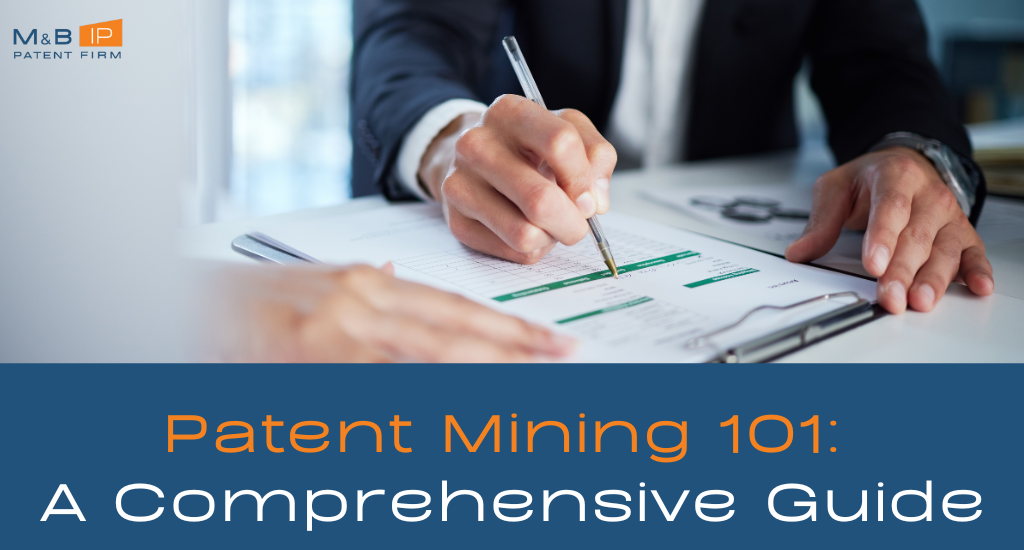- November 19, 2023
- Posted by: mbipuser
- Categories: Ip Topics, Latest article

Outline of the Article:
1. Introduction to Patent Mining
2. The Importance of Patent Mining
4. Steps in the Patent Mining Process
- Identifying Objectives
- Search and Discovery
- Analysis and Evaluation
- Competitive Intelligence
- Legal Considerations
- Tools and Resources for Patent Mining
- Patent Databases
- Data Analysis Software
5. Best Practices in Patent Mining
- Staying Updated
- Collaboration and Communication
7. Case Studies in Patent Mining
Introduction to Patent Mining
Patents play a pivotal role in the world of innovation and intellectual property. In this comprehensive guide, we will delve into the intricate world of patent mining, exploring what it is, why it’s essential, and how to navigate the process effectively.
Introduction to Patent Mining
Patent mining is the systematic process of extracting valuable information from patent documents. It involves identifying, analyzing, and categorizing patents to gain insights into technological trends, competitive intelligence, and potential opportunities. This process is vital for individuals and organizations seeking to stay at the forefront of innovation.
The Importance of Patent Mining
Understanding the importance of patent mining is crucial. It provides a competitive edge, helps in identifying gaps in the market, and allows for strategic decision-making. Moreover, it aids in protecting intellectual property rights and enables businesses to be more innovative.
Types of Patents
Patents come in various forms, including utility patents, design patents, and plant patents. Understanding the differences between these patent types is fundamental for effective patent mining.
Steps in the Patent Mining Process
Identifying Objectives
The first step in patent mining is setting clear objectives. What do you want to achieve with your patent mining efforts? This could be identifying new opportunities, understanding your competitors, or monitoring a specific technology field.
Search and Discovery
Once your objectives are defined, it’s time to search and discover relevant patents. Utilize patent databases and search engines to find patents related to your field of interest.
Analysis and Evaluation
After gathering patent data, it’s essential to analyze and evaluate the information. This step involves assessing the patent’s quality, relevance, and potential impact on your objectives.
Competitive Intelligence
Patent mining is a valuable tool for gathering competitive intelligence. By analyzing your competitors’ patents, you can gain insights into their strategies and innovations.
Legal Considerations
Navigating the legal aspects of patent mining is critical. Ensure that you are compliant with patent laws and regulations in your jurisdiction.
Tools and Resources for Patent Mining
Efficient patent mining requires the right tools and resources. Consider using patent databases and data analysis software to streamline your efforts.
Patent Databases
Leading patent databases like Google Patents, WIPO, and the USPTO provide vast amounts of patent information. These resources are invaluable for patent research.
Data Analysis Software
Data analysis software can assist in processing and visualizing patent data. Tools like PatSeer and Orbit Intelligence can simplify the analysis process.
Best Practices in Patent Mining
To excel in patent mining, follow these best practices:
Staying Updated
The patent landscape is continually evolving. Stay updated with the latest developments in your field to ensure that your patent mining efforts remain relevant.
Collaboration and Communication
Collaborate with experts and stakeholders in your industry. Effective communication and knowledge sharing can enhance your patent mining results.
Ethical Considerations
Ethical patent mining is essential. Respect intellectual property rights and follow ethical guidelines when using patent data.
Case Studies in Patent Mining
Let’s explore some real-world case studies of successful patent mining efforts that have led to significant innovations and discoveries.
Challenges in Patent Mining
Despite its many advantages, patent mining comes with challenges. Issues like the vast volume of patents, language barriers, and the need for constant updates can be daunting. However, with the right approach and tools, these challenges can be overcome.
Conclusion
In conclusion, patent mining is a valuable practice for individuals and businesses seeking to harness the power of patents for innovation, competitiveness, and strategic decision-making. By following best practices, utilizing the right tools, and staying ethical, you can unlock the full potential of patent mining.
FAQs
1. What is the primary goal of patent mining?
Patent mining aims to extract valuable insights from patent documents, enabling innovation, competitiveness, and strategic decision-making.
2. What are the different types of patents?
There are various types of patents, including utility patents, design patents, and plant patents, each serving distinct purposes.
3. How can I stay updated with the latest developments in patent mining?
Staying updated requires regular research, monitoring patent databases, and engaging with experts in your field.
4. What are the ethical considerations in patent mining?
Ethical patent mining involves respecting intellectual property rights, following ethical guidelines, and complying with patent laws.
5. What are the main challenges in patent mining, and how can they be overcome?
Challenges include the volume of patents, language barriers, and the need for constant updates. Overcoming them involves using advanced tools, collaborating, and staying informed.
